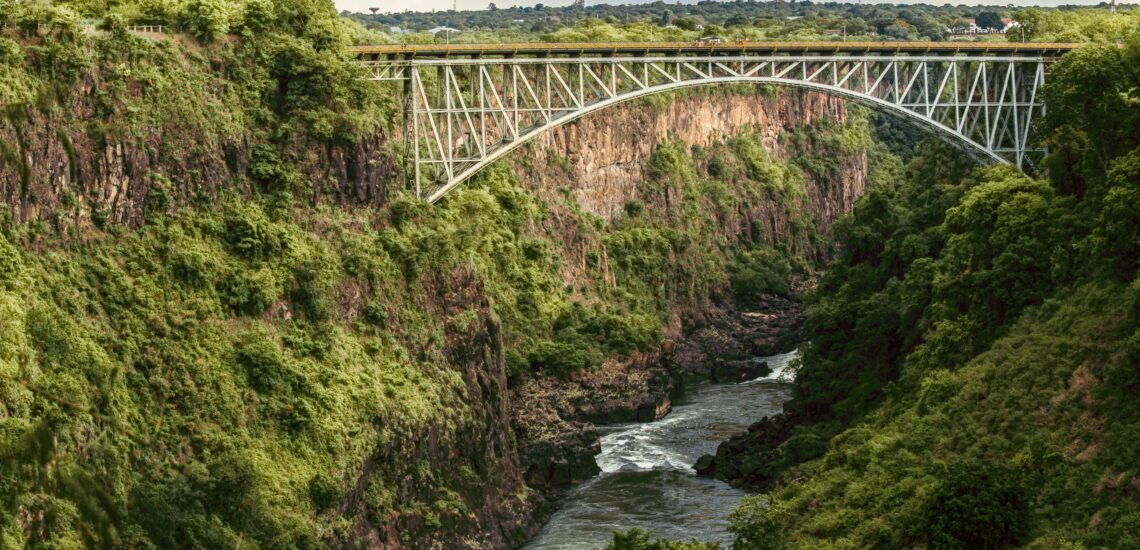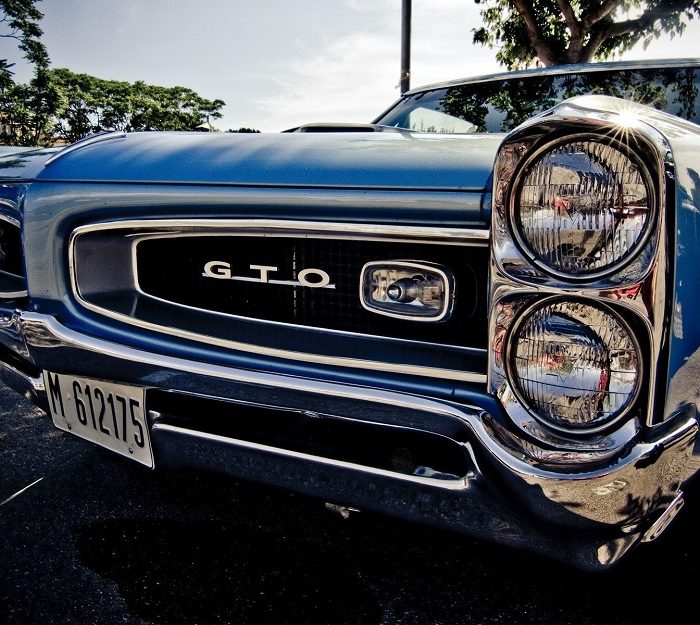Короткі факти про Зімбабве:
- Населення: Приблизно 16 мільйонів чоловік.
- Столиця: Хараре.
- Офіційні мови: Англійська, шона та синдебеле (Ндебеле).
- Валюта: Зімбабвійський долар (ZWL), з минулим використанням кількох валют через гіперінфляцію.
- Уряд: Унітарна президентська республіка.
- Основна релігія: Християнство (переважно протестантство), з корінними віруваннями та меншою мусульманською меншістю.
- Географія: Розташована на півдні Африки, не має виходу до моря та межує із Замбією на півночі, Мозамбіком на сході, Південною Африкою на півдні та Ботсваною на заході. Тут представлені різноманітні ландшафти, включаючи савани, плато та річку Замбезі.
Факт 1: Зімбабве раніше була відома як Родезія
Назва «Родезія» використовувалася з 1895 по 1980 рік і походить від імені Сесіла Роудса, британського бізнесмена та колонізатора, який зіграв ключову роль у встановленні британського контролю над регіоном.
Історичний контекст: Територія, яка зараз відома як Зімбабве, була колонізована Британською Південно-Африканською компанією (BSAC) наприкінці 19 століття, що призвело до створення Південної Родезії. Територія була названа на честь Сесіла Роудса, який зіграв важливу роль у розширенні компанії в регіоні.
Перехід до Зімбабве: У 1965 році уряд білої меншини Південної Родезії в односторонньому порядку проголосив незалежність від Британії, перейменувавши країну в Родезію. Ця декларація не була визнана міжнародним співтовариством, що призвело до санкцій та ізоляції. Країна пережила тривалий період конфлікту та переговорів щодо свого майбутнього.
У 1980 році після низки угод і переговорів Родезія була офіційно визнана незалежною державою і перейменована на Зімбабве.
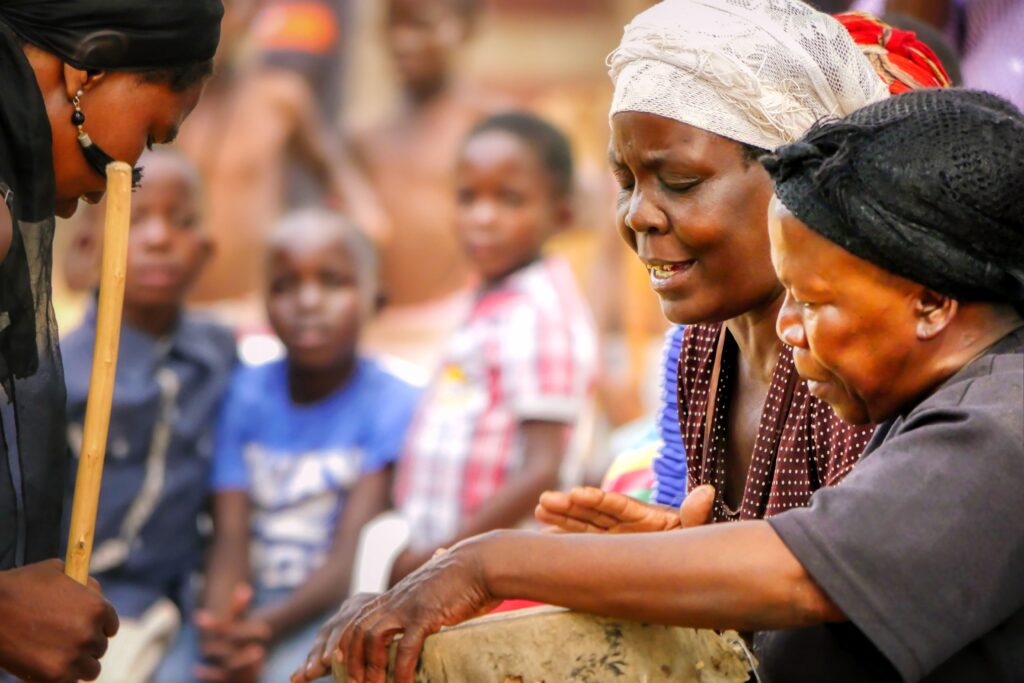
Факт 2: Зімбабве має 2 основні народи
Зімбабве є домом для двох основних етнічних груп, шона та ндебеле, але країна відрізняється лінгвістичним розмаїттям, де розмовляють приблизно двома десятками мов. Народ шона є найбільшою етнічною групою, яка становить більшість населення, тоді як народ ндебеле є другою за величиною групою. Країна офіційно визнає 16 мов, включаючи шона та ндебеле. Серед інших мов розмовляють чева, чібарве, чітонга, чівойо, каланга, койсан, ндау, шангані, сото, шубі та венда. Це мовне розмаїття відображає складну культурну спадщину країни та присутність різних етнічних спільнот по всій країні.
Факт 3: Водоспад Вікторія можна відвідати в Зімбабве
Водоспад, розташований на кордоні між Зімбабве та Замбією, є однією з найвідоміших природних пам’яток світу. Зімбабвійська сторона пропонує одні з найкращих оглядових майданчиків і зручностей для відвідувачів, а місто Вікторія-Фоллс є головними воротами до цього місця.
Водоспад, відомий своєю вражаючою шириною та висотою, створює приголомшливе видовище, коли річка Замбезі падає через край. Відвідувачі зімбабвійської сторони можуть насолодитися низкою заходів, які дозволять їм відчути водоспад з різних кутів, включаючи мальовничі краєвиди з доглянутих доріжок і точок огляду. Район добре обладнаний номерами та туристичними послугами, що робить його популярним місцем для тих, хто хоче побачити велич водоспаду Вікторія.
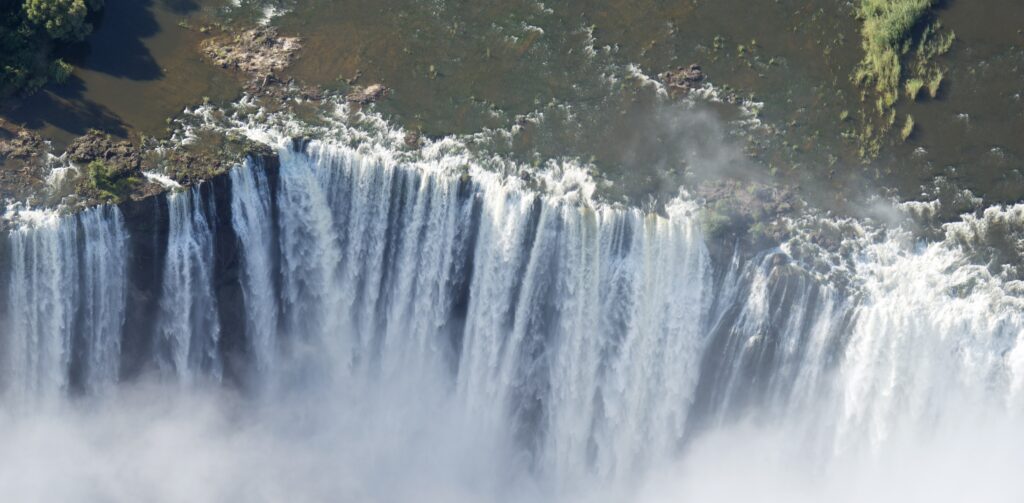
Факт 4: Озеро Карібо – одне з найбільших рукотворних озер у світі
Озеро Каріба, утворене будівництвом дамби Каріба на річці Замбезі, є одним із найбільших у світі рукотворних озер. Озеро, розташоване на кордоні між Зімбабве та Замбією, займає приблизно 5400 квадратних кілометрів і має максимальну глибину близько 28 метрів. Гребля, завершена в 1959 році, була побудована в основному для виробництва гідроелектроенергії, що забезпечує електроенергією обидві країни.
Окрім своєї ролі у виробництві електроенергії, озеро Каріба стало значним ресурсом для рибальства та туризму. Озеро підтримує різноманітні види риб і приваблює відвідувачів для сафарі на човні та риболовлі.
Факт 5: Зімбабве має 5 об’єктів Всесвітньої спадщини ЮНЕСКО
Зімбабве є домом для п’яти об’єктів Всесвітньої спадщини ЮНЕСКО, кожен з яких визнаний своєю унікальною культурною та природною значущістю. Ці місця відображають багату історію країни, різноманітні екосистеми та культурну спадщину.
1. Національний пам’ятник Великого Зімбабве: Це місце охоплює залишки стародавнього міста Великого Зімбабве, могутнього королівства, яке процвітало з 11 по 15 століття. Руїни включають вражаючі кам’яні споруди, такі як Велика огорожа та Велика вежа, які демонструють архітектурні та інженерні навички цивілізації шона.
2. Національний парк Mana Pools: Розташований вздовж річки Замбезі, цей парк відомий своєю різноманітною дикою природою та незайманими ландшафтами. Це частина більшої екосистеми басейну річки Замбезі, де живуть великі популяції слонів, буйволів і різних видів птахів. Парк цінується своєю природною красою та екологічним значенням.
3. Національний парк Хванге: Найбільший мисливський заповідник Зімбабве, Національний парк Хванге відомий своїми великими стадами слонів і великою кількістю інших диких тварин, включаючи левів, жирафів і численні види птахів. Різноманітність середовищ існування парку, від саван до лісів, робить його важливою природоохоронною територією.
4. Пагорби Матобо: На цьому місці представлені унікальні гранітні утворення та стародавні наскальні малюнки, створені ранніми жителями регіону. Пагорби також є місцем останнього спочинку Сесіла Роудса, видатної фігури в колоніальній історії Зімбабве. Культурні та геологічні особливості території мають велике значення.
5. Руїни Кхамі: Руїни Кхамі – це залишки стародавнього міста, яке було головним центром торгівлі та політики в доколоніальний період. На цьому місці є залишки кам’яних конструкцій, включаючи стіни та терасові ділянки, які відображають передове міське планування та майстерність цивілізації Кхамі.
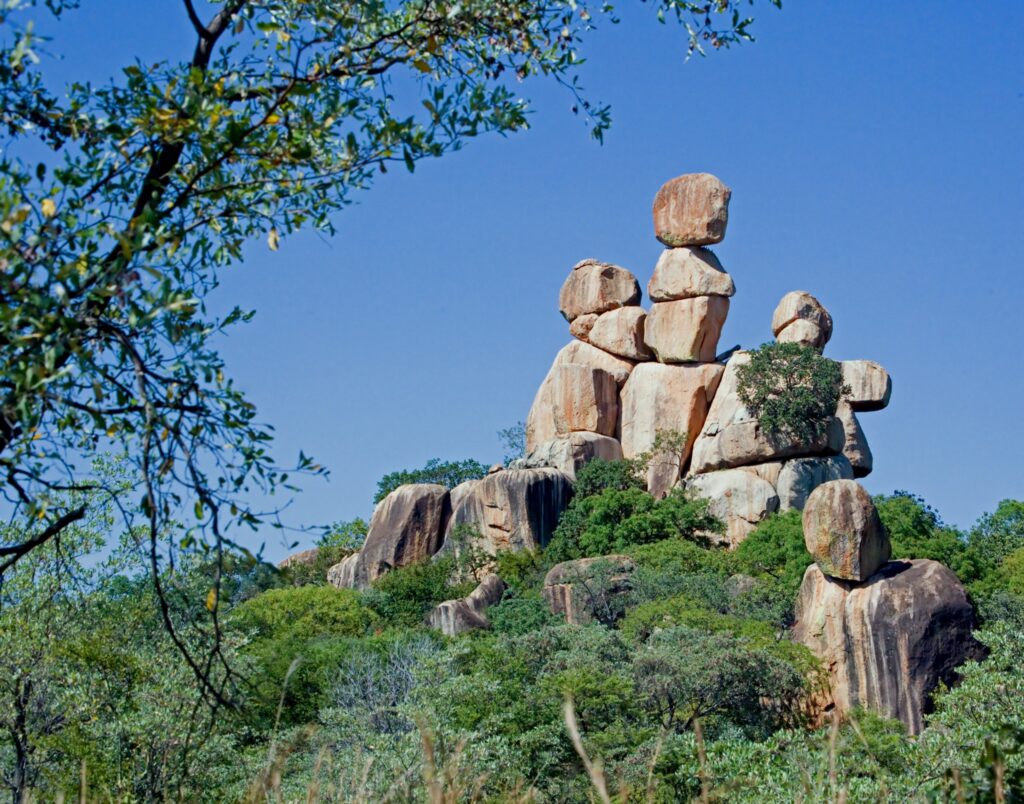
Факт 6: У Зімбабве величезна кількість наскальних малюнків
Зімбабве відомий своєю величезною колекцією наскальних малюнків, які є одними з найбільш значних і численних в Африці. Ці стародавні твори мистецтва, розкидані по різних місцях країни, пропонують глибоке уявлення про доісторичні культури регіону.
Картини переважно знаходяться в таких районах, як пагорби Матобо та гори Чіманімані. Створені кілька тисяч років тому, вони містять різноманітні сюжети, включаючи дику природу, людські фігури та церемоніальні сцени. Ці яскраві та детальні зображення надають цінну інформацію про соціальне та духовне життя перших мешканців, які, як вважають, були народом сан.
Факт 7: Зімбабве походить від слів «будинки з каменю»
Назва «Зімбабве» походить від стародавнього міста Великого Зімбабве, яке є значним історичним місцем країни. Вважається, що сам термін «Зімбабве» походить з мови шона, а «дзімба дзе мепо» перекладається як «будинки з каменю».
Велике Зімбабве, колись процвітаюче місто між XI і XV століттями, було відоме своїми вражаючими кам’яними спорудами, у тому числі Великим замком і Великою вежею. Ці споруди є свідченням передових інженерних та архітектурних навичок народу шона.
Примітка: Якщо ви плануєте подорожувати країною самостійно, уточніть перед поїздкою, чи потрібен вам міжнародний водійський дозвіл у Зімбабве, щоб орендувати та керувати автомобілем.
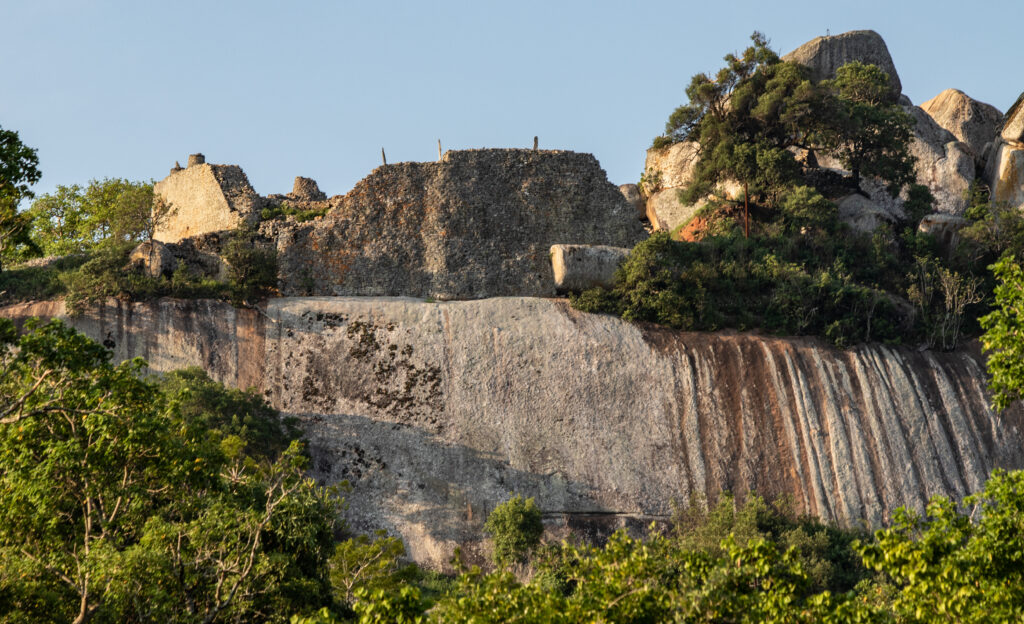
Факт 8: Рекордний рівень інфляції в Зімбабве
На піку гіперінфляційної кризи в Зімбабве наприкінці 2000-х років економічна ситуація в країні стала настільки жахливою, що людям потрібні були мільйони зімбабвійських доларів, щоб купити основні продукти харчування. До листопада 2008 року рівень інфляції в Зімбабве досяг астрономічних 79,6 мільярдів відсотків на рік. Ціни на товари повсякденного попиту різко зросли з безпрецедентною швидкістю, що змусило людей мати при собі величезні суми готівки лише для того, щоб купити речі першої необхідності.
Наприклад, ціна на буханець хліба, який на початку 2008 року коштував близько 10 зімбабвійських доларів, до кінця року зросла до понад 10 мільярдів зімбабвійських доларів. Така швидка девальвація валюти зробила її практично безцінною та серйозно вплинула на повсякденне життя зімбабвійців. У відповідь на цю кризу Зімбабве зрештою відмовився від своєї валюти в 2009 році, перейшовши на іноземні валюти, такі як долар США та південноафриканський ранд, щоб стабілізувати економіку.
Факт 9: У Зімбабве можна побачити як білих, так і чорних носорогів
У Зімбабве можна побачити як білих, так і чорних носорогів, що робить країну важливим місцем для збереження носорогів і спостереження за дикою природою. Популяція південних білих носорогів значно зросла завдяки ефективним зусиллям щодо збереження, і їх можна знайти в різних національних парках і заповідниках. Історично в Зімбабве також була невелика популяція північного білого носорога, що перебуває під загрозою зникнення.
Чорні носороги, відомі своєю більш самотньою поведінкою, також присутні в Зімбабве. Вони в основному зустрічаються в заповідних зонах, таких як національний парк Хванге та пагорби Матобо.
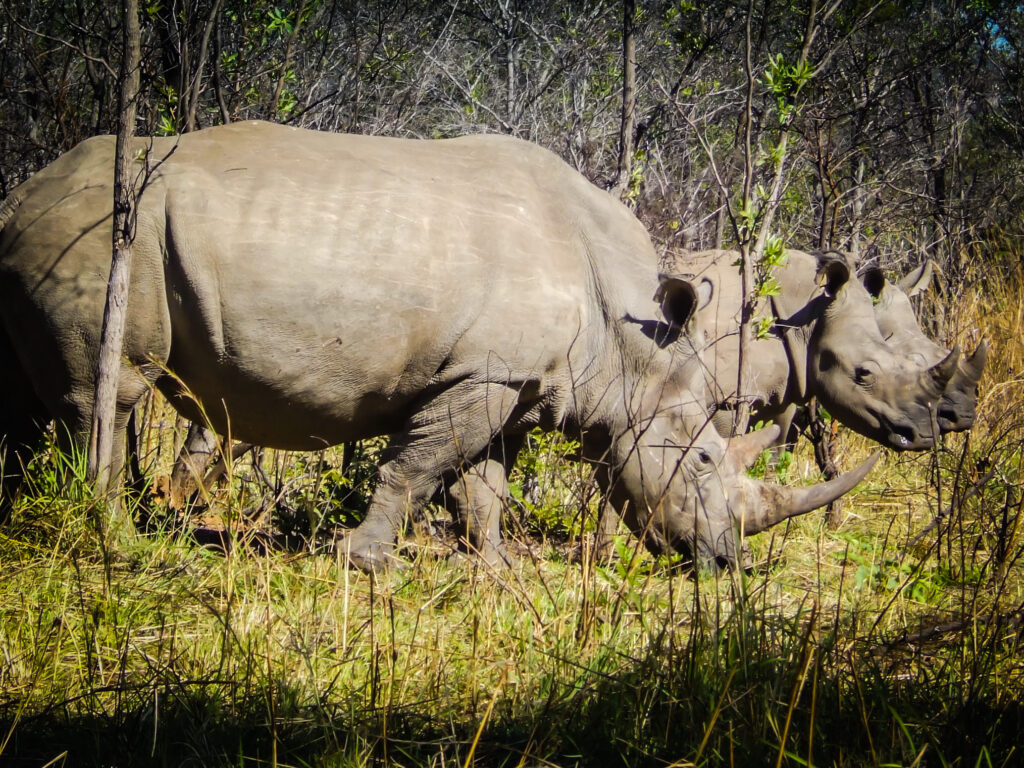
Факт 10: Магічне мислення все ще поширене в традиціях народів Зімбабве
Багато громад, особливо в сільській місцевості, продовжують вірити в духів предків, чаклунство та надприродні сили. Ці переконання часто впливають на повсякденне життя, соціальні взаємодії та реакцію на хворобу чи нещастя.
Наприклад, коли люди стикаються з незрозумілими подіями, такими як раптова хвороба або раптова смерть, вони нерідко звертаються за порадою до народних цілителів або духовних лідерів. Ці фігури, які часто розглядаються як посередники між фізичним і духовним світами, відіграють вирішальну роль у тлумаченні причин нещасть, які іноді приписують чаклунству чи незадоволеним предкам. Незважаючи на модернізаційні впливи в міських районах, ці традиційні вірування в магічне мислення все ще резонують у багатьох зімбабвійців.

Опубліковано Вересень 15, 2024 • 8хв на читання

